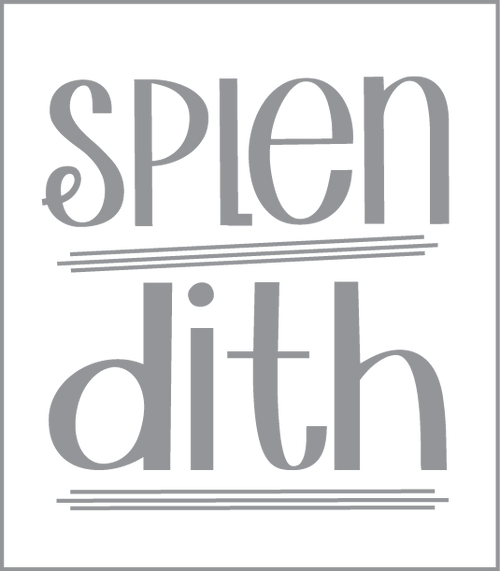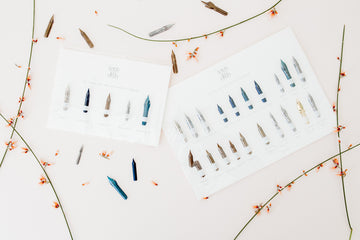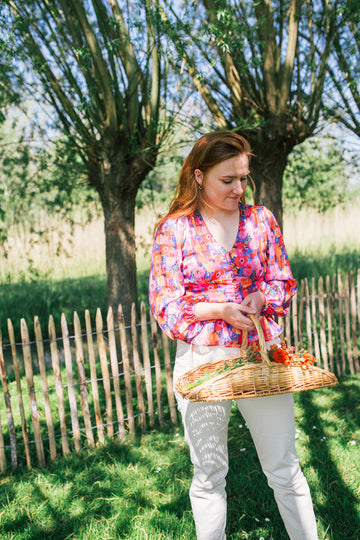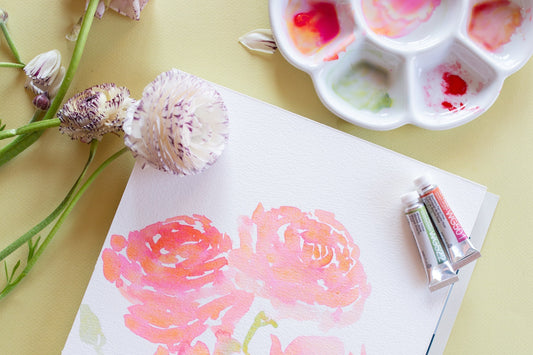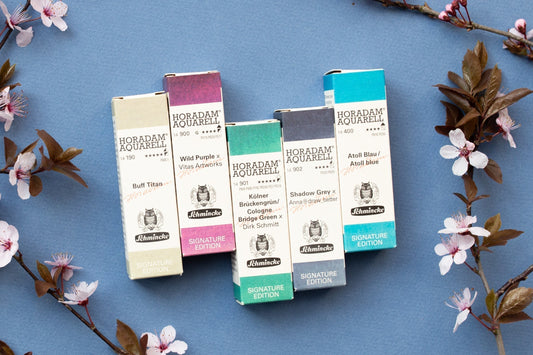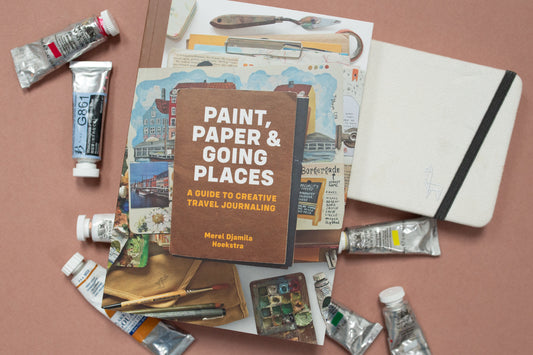Which calligraphy nib or pen should I choose? This is the most frequently asked question of new calligraphers. The range of nibs for calligraphy can be overwhelming, as the choice seems endless. Trying out is one of the ways to find out what you like a good nib. You don't have to desperately look for this. There is no perfect nib that can do everything. Hmm, bummer? No, because there are several nice nibs available.
Tips to expand your nib collection:
There is not one perfect nib:
So don't look at one "perfect nib" but look for a number of nibs that work well for you. Then you end up with a number of favorites. Each pen has different properties that are nice. There are, of course, some nibs better suited for a beginner. In this blog I will tell you more about differences, and in this blog you can read my experiences per nib.
The difference between calligraphy nibs:
These are different types of nibs, all for different types of calligraphy styles. For modern calligraphy you only use pointed dip nibs, which is why I only briefly explain the other two nibs.
Pointed nibs
With these pens the nib fills with ink when dipped in an ink barrel. The point always has a sharp point.
Fountain pens / fountain pens
These pens have an ink reservoir in the body of the pen. This says nothing about the type of pen, but it does say about the reservoir.
Broad tip nibs
At many calligraphy shops you will see nibs with a thin, wide tip. You cannot use it well for modern calligraphy. The wide nibs are suitable for Gothic calligraphy. That is a completely different style of calligraphy and you can recognize it from old records.
Pointed nib points for modern calligraphy
All pointed nibs have a fine, sharp point formed by two halves that come together. You will always see a line running through the center of the point that divides the point into two sheets. Those two sheets are called "tines". These are neatly aligned with each other in "rest" position. As soon as the pen is pressed against the paper, the tines spread and the ink can flow through them.
How do you create the thin and thick lines with calligraphy?
The amount of pressure you apply to the paper determines how much the thines spread apart and how wide the line becomes. The thin and thick strips are created by varying pressure on the pen and changing the angle on the paper.
Applying the perfect pressure will take some practice. The more flexible the tines of a nib are, the easier they separate and the easier it is to get a wide downstroke. One person tends to push hard on a pen and another person doesn't. After some practice you will find out which nib works best for you.
Beginners nib
The offer in the Netherlands is not that large, usually a Nikko G nib is recommended to start with calligraphy. I will recommend that you try a few different nibs and continue to practice with the nib that you like. Once you have that nib under control, it's time to try out some new nibs. Fortunately, the nibs aren't extremely expensive, so it's easy to try some of them. For the shop I made two different sets, to try different pens.
Do you have any questions? Let me know in the comments.
Love,
Judith
